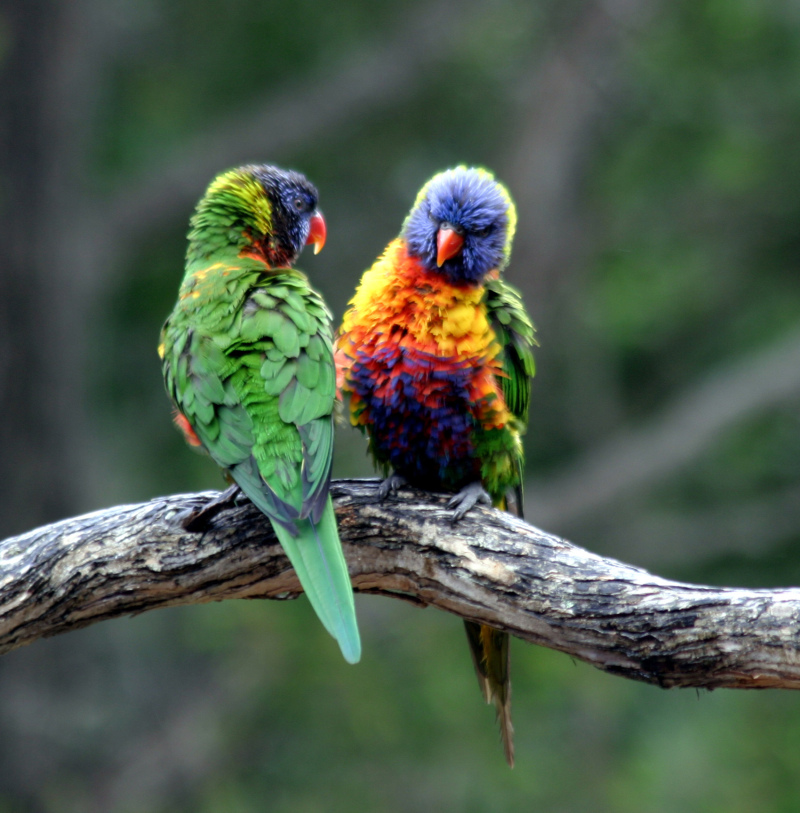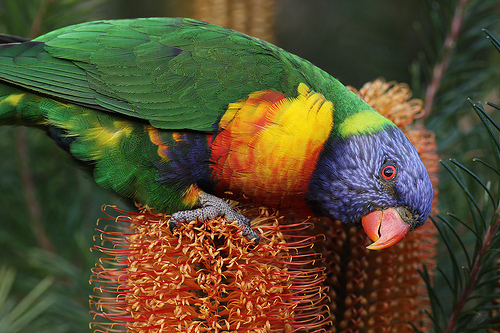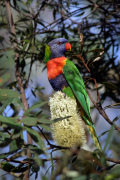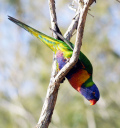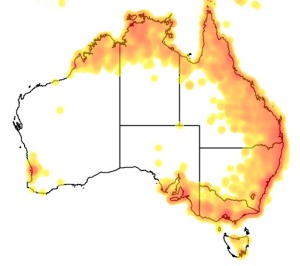Colours
Distinguishing features
The plumage of the nominate race, as with all subspecies, is very bright. The head is deep blue with a greenish-yellow nuchal collar, and the rest of the upperparts (wings, back and tail) are deep green. The chest is red with blue-black barring. The belly is deep green, and the thighs and rump are yellow with deep green barring. In flight a yellow wing-bar contrasts clearly with the red underwing coverts. There is little to visually distinguish between the sexes. Juveniles have dark eyes and a black beak which gradually brightens to orange in the adults.
The markings of the best known subspecies Trichoglossus haematodus moluccanus resemble those of the nominate race, but with a blue belly and a more orange breast with little or no blue-black barring. Other subspecies largely resemble either the nominate race or Trichoglossus haematodus moluccanus, or are intermediate between them. Two exceptions are Trichoglossus haematodus flavicans and Trichoglossus haematodus rosenbergii. In the rather variable Trichoglossus haematodus flavicans the green of some individuals is dull, almost olivaceous, but in others the green hue approaches that typical of the nominate species.
Trichoglossus haematodus rosenbergii is highly distinctive and several features separate it from all other subspecies: Its wing-bars are deep orange (not contrasting clearly with the red underwing coverts in flight), the entire nape is yellow bordered by a narrow red band and the dark blue barring to the red chest is very broad. (Wikipedia)
Juveniles have black beaks that slowly change to the adult orange colour as they mature.
Size
- From 25 cm to 30 cm (Length of specimen)
Wingspan
- Up to 45 cm
Synonyms
Distribution
Audio recordings
Behaviour
They often travel together in pairs and occasionally respond to calls to fly as a flock, then disperse again into pairs. Pairs defend their feeding and nesting areas aggressively against other Rainbow Lorikeets and other bird species. They chase off not only smaller birds such as the Noisy Miner, but also larger and more powerful birds such as the Australian Magpie. (Wikipedia)
Diet
They feed mainly on fruit, pollen and nectar, and possess a tongue adapted especially for their particular diet. The end of the tongue is equipped with a papillate appendage adapted to gathering pollen and nectar from flowers. Nectar from eucalyptus is important in Australia, other important nectar sources are Pittosporum, Grevillea, Spathodea campanulata (African Tulip-tree), and sago palm. In Melanesia coconuts are very important food sources, and Rainbow Lorikeets are important pollinators of these. They also consume the fruits of Ficus, Trema, Muntingia, as well as papaya and mangoes already opened by Flying Foxes. (Wikipedia)
